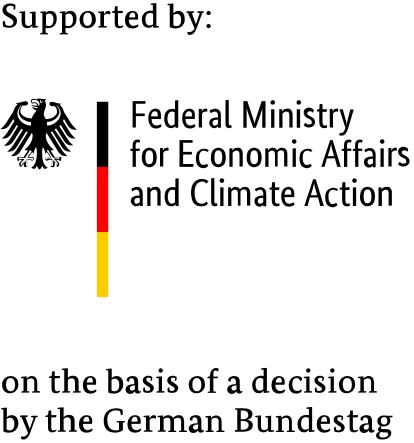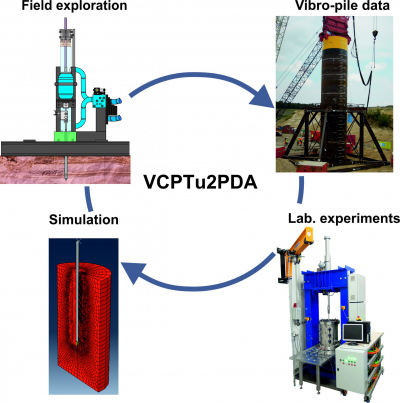- Marine Engineering Geology
- Projects
- VCPTu2PDA
VCPTu2PDA


Project Topic
VCPTu2PDA aims to use Vibratory Cone Penetration Tests (VCPTu) to reduce the errors of vibratory Pile Drivability Analyses (PDA) using a fundamentally new approach. The planned product is a fast and easy to use software for vibratory Pile Drivability Analyses.
Project Description
Vibratory pile driving is a potentially superior alternative to impact pile driving. Vibratory driving reduces the number of tool changes offshore, allows for faster pile driving, causes less material fatigue, and creates less under water noise. Less noise is beneficial for marine mammals. The optimal choice of the vibrator in terms of weight and energy is crucial for vibratory pile driving to reach the design depth with a high level of confidence. Conventional quasistatic CPTu is not well suited as an input for pile drivability prediction, because the cyclic soil behavior is fundamentally different from the static soil behavior. A vibratory CPTu, the VCPTu, was successfully developed in a recently finished project and allows for soil profiles with different distance-controlled frequencies and amplitudes. What is still missing is a method to define the amplitudes and frequencies for VCPTu tests and use the results for a Pile Drivability Analysis PDA with an acceptable level of confidence.
VCPTu2PDA aims to develop a new PDA for Vibratory pile driving using VCPTu measurements. The fundamentals of vibratory penetration will be tested with miniature VCPTu tests in a laboratory CPT calibration chamber, combined with cyclic element tests on the same relevant soil samples. These results will be used to verify a 3D simulation of vibratory penetration. In a next step, this time consuming and complex simulation will be simplified to a 1D method, ready to be used in industry projects. VCPTu field campaigns will test the behavior of real soils, and that especially near vibratory driven instrumented piles.
The field data will then be used to calibrate and verify the 1D method. Data form instrumented offshore piles will help to develop the method for offshore application.
Project Target
The target of the project is to reduce the uncertainty in vibratory Pile Drivability Analysis using VCPTu data. For this purpose, laboratory tests, numerical simulations, and field tests will be performed.
Together with data from instrumented piles, a new method of pile driving analysis for vibrated piles will be developed. The new method is intended to be similar to existing pile-driving analyses for driven piles and to fit seamlessly into established project procedures.
Joint Project
Project Coordination
MARUM, University Bremen
Project Lead: Dr. Stefan Kreiter
Leobener Str. MARUM, 28359 Bremen, Germany
E-Mail: [Bitte aktivieren Sie Javascript]
Joint Partners
Geo‐Engineering.org GmbH
28239 Bremen, Germany
Associated Partners
RWE Renewables GmbH
45127 Essen, Germany
COWI A/S – Hamburg Branch Office
20457 Hamburg, Germany
Deltares
Delft, The Netherlands


